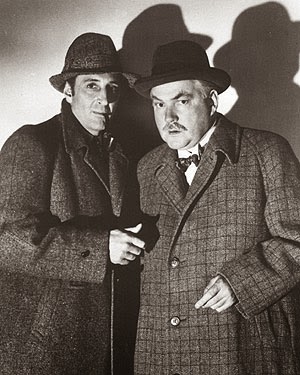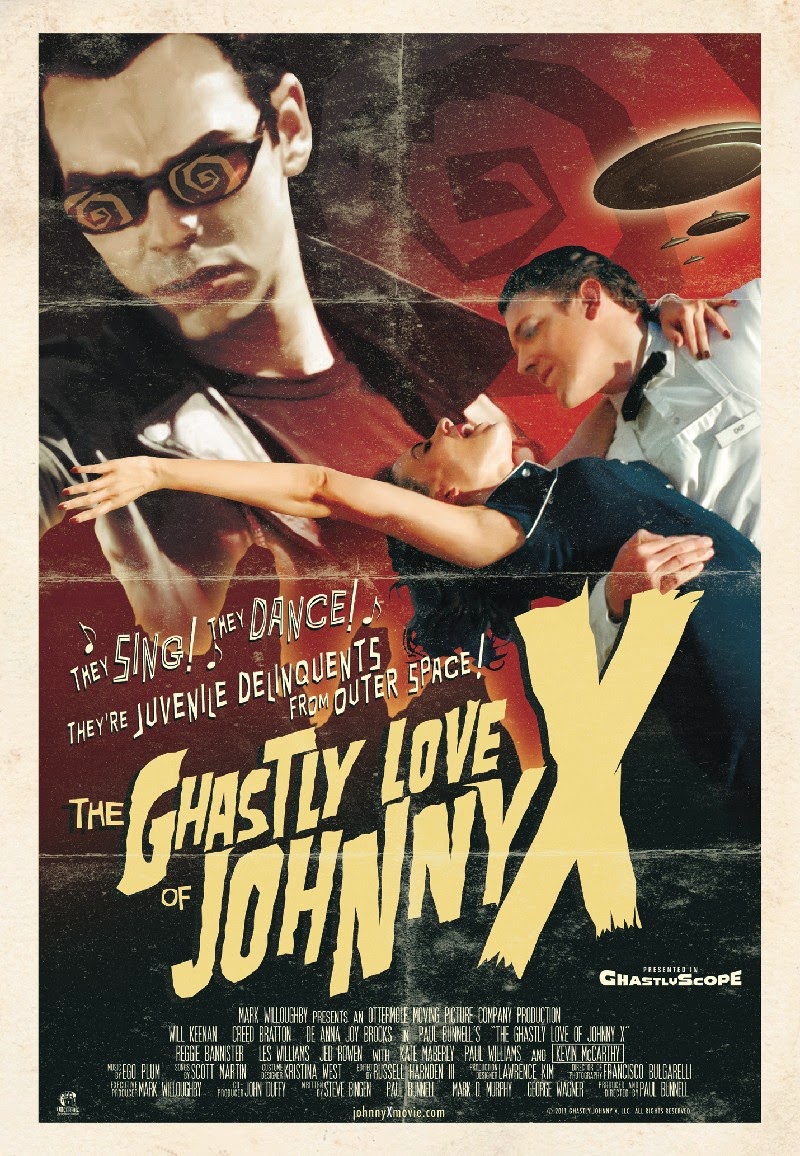I Am Sherlocked
A
quick glance around the internets these days, and you'll discover
that many a person is all hot and bothered over Benedict Cumberbatch
and the BBC's Sherlock,
the series which modernizes the adventures of Sir Arthur Conan
Doyle's classic detective and his companion, Dr. Watson. But that is
the not the first time an attempt to modernize the classic literary
character had been made. That happened during the run of the first,
arguably, wildly popular media adaptation of the characters, the
Sherlock Holmes film series from the late '30s to mid '40s, staring
Basil Rathbone as Holmes, and Nigel Bruce as Dr. Watson.
All
together the series comprises 14 films made between 1939 and 1946—
made alongside a popular radio program staring the two leads as well.
The first two films in the series were made at 20th
Century Fox, then a gap in the series occurred, resuming in 1942 at
Universal. Though the films made at Fox were big budgeted A pictures,
Universal launched their line as a B series Although a B series with
high production values, sharing some of the same personnel as their
bread and butter monster movies.
Those
two Fox films, The
Hound of The Baskervilles
and The Adventures
of Sherlock Holmes
were both set in the period appropriate Victorian Era. When Universal
launched their series, with World War Two well underway, they decided
to bring Holmes into the modern era. Borrowing quite loosely from the
Doyle stories for most of the films. The first of Universal's
efforts, Sherlock
Holmes and The Voice of Terror,
opens with a card explaining that “The timeless appeal of Sherlock
Holmes can fit into any era.” In Voice
of Terror
Holmes and Watson are fighting the Nazis.
The
Holmes vs the Nazis feel would continue into the next two films,
Sherlock Holmes
and The Secret Weapon,
and Sherlock
Holmes in Washington.
This was dropped from the series with the fourth film , the films
kept a modern setting, but added a Gothic Victorian feel. Houses lit
by candle light, and noir touches to the look. These may have been
produced as B films, most with a run time of roughly 70 minutes, but
they are very high quality B films.
The series has long been a favorite of many a film buff, and I am
definitely one of them. I owned a few of the films on VHS tapes as a
kid, and loved them. Never intended to be over analyzed or anything,
just meant to entertain and provide a nice get away for an audience
dealing with the horrors of wartime. The film's short length made
them perfect programmers for the early days of television. Sometime
in the 1950s, Universal lost the rights to the series off to a
syndicator, that promptly began doing a slice and dice job on the
film's original negatives.
In the 1970s, four of the films in the series fell into the public
domain. The quality of the prints used for the VHS releases varied
widely. Some looked great, some looked horrible, and some were fair.
The films had changed ownership so many times that come the early
'90s, the film elements were in very rough shape.However, the
Rathbone/Bruce series needed not only restoration work, but rescuing.
The
two 20th
Century Fox films had survived just fine, but the other 12 are an
entirely different story. The Universal openings had been hacked off,
and the negatives trashed. Sequences had been cut, trimmed, and
tossed. Worse of all, the film itself had begun to deteriorate due to
poor storage, and a few of the films were literally saved from
extinction in the nick of time. The massive undertaking began in the
early 90s by the UCLA Film and Television Archive.
With funding from UCLA, Hugh Hefner, and Warner Brothers, the 12
Universal titles were fully restored over a 10 year period. In some
cases, where original negatives had survived, the work was easy. In
others, sections of 16mm prints had to be blown up and used to
restoration. When all was said and done, new 35mm negatives on modern
film stock had been made, insuring the series will be around for
many more decades to come. In the early 2000s, the efforts were
brought forth on DVD, and the restoration was met with great praise.
Then,
in 2011, a most unexpected surprise happened. The new 35mm elements
were used to make full 1080p HD masters, and the entire 14 film
series was released on blu-ray. The films do look amazingly good in
HD, not all are perfect, due to some of the elements that had to be
used for restoration, but by in large it's a real joy to see these
films looking so clear and sharp. It speaks volumes to the enduring
appeal of the Rathbone/Bruce films that not only did they receive a
massive restoration, but they've now been brought into the 21st
century on blu-ray for the masses to enjoy. A wonderful series that
stands as one of my absolutely favorites. Well worth seeing if
they've never glanced across your eyes before.



Comments
Post a Comment